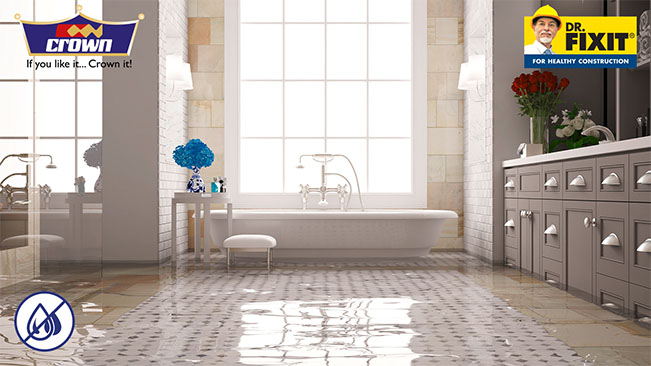
Water can do a lot of damage in a residential building, particularly when it goes undetected for a long period of time. If a wet area/bathroom is not waterproofed correctly, water can seep out undetected into other areas of the home.
This can cause:
- Rising damp – where water rises through walls, floors and masonry via capillary action, in opposition to gravity.
- Mould and mildew – these can release spores into the air which can be harmful to those with respiratory problems such as asthma.
- Corrosion of plumbing – rusted pipes can lead to further water leaks, compounding the problem even further.
- Compromised electrics – water dripping onto light fittings and pooling in ceilings can create a high risk of fire or electrocution.
- Concrete cancer – the steel reinforcing within the concrete begins to rust, causing it to expand and displace the concrete around it, which makes it become brittle and cracked and weakens the building’s foundations.
Today’s article provides a complete set of solutions for dealing with leakages in bathrooms and toilets.
A bathroom is a home’s most utilized room and is subjected to heavy wetness, however most of the time it is not given enough attention. Bathrooms are frequently exposed to moisture and failure to waterproofing it could lead to a major problem. Moreover, bathroom waterproofing is perceived by most people as a cost unaware of the problems which will arise in the future and repairing it will be 4 times costly than doing it at the construction stage.
Let us see the various areas where leakages can happen in a bathroom.
- Slab
- Tile Joints
- Down take pipe joints in the wall
- Gaps between sanitary ware
Waterproof cement is basically an integral powder waterproofing product which will do its part by making the mortar bed or bathroom concrete slab cohesive. It will not form a film over the substrate and due to thermal stresses, static shrinkage cracks appear on the substrate, resulting in water leakages.
Tile joints and gaps between sanitary fittings that are commonly filled with white cement do not last for long as cement has an inherent property to shrink over time and this can be one cause of leakage.
The pipe joints at the junction of the slab and/or wall are usually just filled using normal cement sand mortar which cracks over a period.
Water tightness in bathrooms can be achieved by treating the concrete surface by applying a cementitious coating over the slab which forms a film and doesn’t allow water to pass through it. It is flexible enough to bridge static shrinkage cracks, using polymer modified mortar around pipe outlets, using tile adhesives for fixing tiles, tile grout for tile joint treatment and appropriate sealants around sanitary ware.
As a front-end solution, we suggest the usage of Dr Fixit Pidifin 2k for waterproofing of concrete slab in bathrooms.
It is an acrylic cementitious, polymer-modified elastomeric, waterproofing & protective coating composed of best quality Portland cement, properly selected & graded aggregates, additives & acrylic emulsion polymer as a binder. It is applied to waterproof and protect concrete and masonry substrates.
Application Areas:
- Bathrooms, balconies and kitchen sink areas
Features:
- An elastomeric flexible coating that accommodates cracks up to 2 mm with an elasticity of 40-50% at 1mm DFT in 2 coat application
- Excellent resistance to ingress of water
- Excellent adhesion to concrete and masonry surfaces
- Non-toxic with a low VOC content
Pack Size:
- 3kg, 15kg & 30kg
We recommend Dr Fixit Super Latex – SBR Latex polymer for making angle fillets /coving and filling gaps around down take pipes. Dr Fixit Super Latex, when mixed into cement sand mortar, enhances the strength of the mortar and makes it more durable by reducing drying and shrinkage cracks.
We also recommend the usage of Dr Fixit Modern Tile Adhesive and Dr Fixit Tile Grout for fixing tiles and tile joints.






